Nghe An farmers restore production after storm, aiming for year-end market
After storm No. 10, farmers in all localities in Nghe An are busy overcoming the consequences, stabilizing barns, rebuilding ponds, improving fields, and starting the new production season. From the mountains to the plains, the urgent working atmosphere spreads throughout the countryside, aiming for a "sure" winter crop and a bustling year-end market.
Restore livestock

Storm No. 10 caused serious damage: More than 4,600 hectares of rice, nearly 8,000 hectares of vegetables, nearly 8,000 hectares of perennial trees and more than 45,000 hectares of forest were affected; tens of thousands of trees were broken; nearly 400,000 poultry, more than 1,200 livestock were swept away or died; thousands of barns, hundreds of hectares of shrimp ponds, dozens of cages were severely damaged.
As soon as the water receded, farmers got to work, with the mindset of “recovering as much as possible from the damage”. Many farms and ranches in Nghe An started repairing barns, disinfecting, and treating the livestock environment. People took advantage of the opportunity to restore and increase their herds early, preparing goods for the year-end market.
In shrimp farming communes like Quynh Anh, Quynh Mai, Tan Mai, aquaculture farmers do not allow themselves to rest for long. Mr. Nguyen Xuan Tin, owner of a shrimp pond in Quynh Anh with more than 2 hectares of farming area, has just cleaned up torn tarps and had people treat the pond floor.

“The shrimps that were released just over a month ago all died after the storm. The damage is not small, but we have to quickly clean the pond, disinfect the water, and reinforce the dykes to catch up with the new crop. The weather is favorable, any delay means losing the opportunity,” said Mr. Tin.
At Mr. Hoang Van Linh's high-tech shrimp farm in Quynh Mai ward, the restoration work is also taking place urgently. Additional workers were hired to rebuild the greenhouse, replace all the plastic covers, and treat the water source with lime and biological products. "After the storm, the water environment is heavily polluted. If not disinfected thoroughly, white spot and red body diseases can easily occur. We have to be careful with every step to ensure the safety of the new shrimp crop," Mr. Linh shared.

At the same time, in An Chau commune, considered the “chicken capital” of the province, dozens of chicken farms suffered heavy damage. According to Ms. Nguyen Thi Thanh, Chairwoman of the Farmers’ Association of An Chau commune, the whole commune had 85 households affected, with more than 110,000 poultry dead due to flooding, many farms lost everything overnight. “We have coordinated with the authorities and organizations to collect poultry carcasses, destroy them in a hygienic manner, and at the same time spray disinfectants and repair barns to soon restore the flock,” Ms. Thanh said.
Standing next to the newly reinforced barns, Ms. Nguyen Thi Dung, a large chicken farm owner in the commune, was busy spraying disinfectant. “The storm flooded 3 rows of barns to a depth of 1 meter, killing 20,000 chickens. Now the difficulties are compounded but we cannot sit still. We are cleaning and sanitizing the barns, reinforcing the floor, and preparing to bring in new flocks in time for the Tet market. We just hope for more support in terms of capital and breeding stock,” Ms. Dung said.
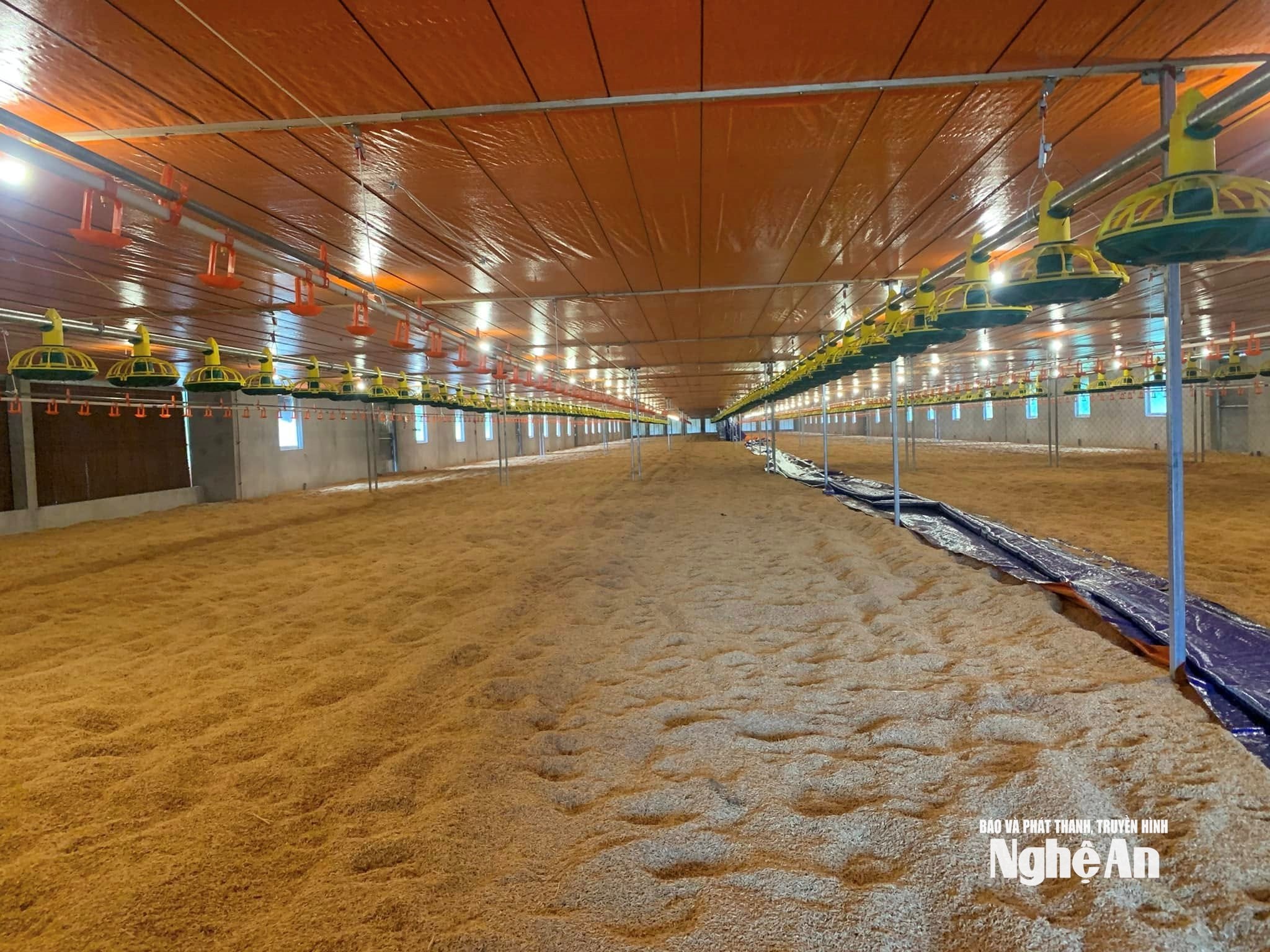
According to the Nghe An Department of Animal Husbandry and Veterinary Medicine, at this time, most livestock households are preparing to re-herd to meet the needs of the end of the year, the largest livestock crop of the year. At the same time, it is recommended that people should not be hasty, but must strictly follow biosafety procedures: only import breeds from reputable facilities, thoroughly disinfect barns, control water and food sources, and regularly monitor the health of livestock. After storms, humid environments are ideal conditions for pathogens to arise, so early disease prevention is crucial to the success of the entire crop.
Winter crop season continues to meet year-end supply
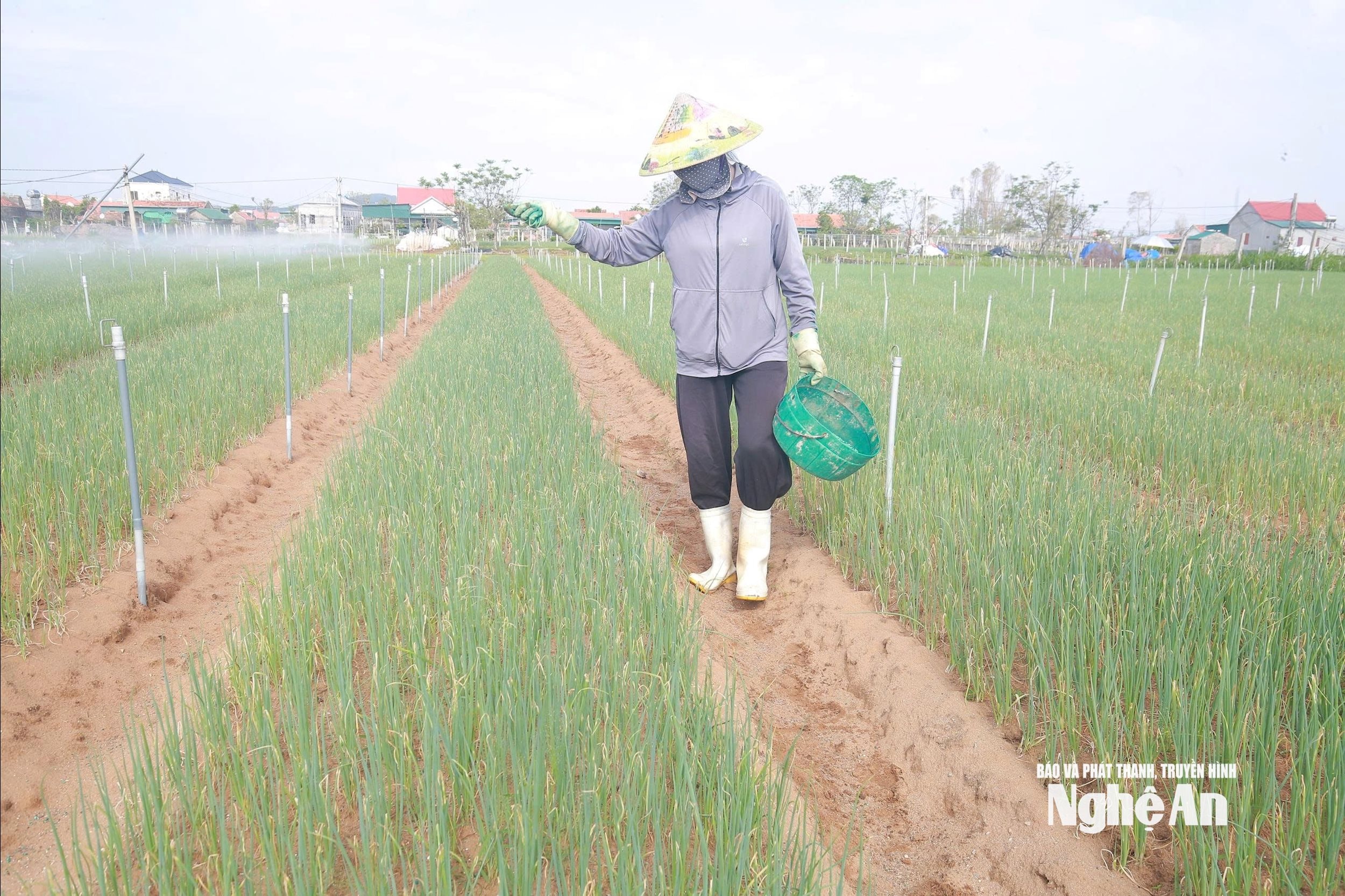
While the atmosphere in the livestock farms is bustling again, in the fields, farmers are also racing against the times. This year’s winter crop was delayed by nearly half a month due to prolonged storms and rains, so everyone is taking advantage of every sunny day to plant.
In Quynh Mai ward, which has the largest vegetable growing area in the province, people have been bustling out to the fields since early morning. The sound of tractors, hoeing, and people chatting echoed throughout the fields. Mr. Hoang Ngoc Anh - Vice Chairman of the ward's Farmers' Association said: "This year, the ward plans to plant more than 300 hectares of winter vegetables, including carrots, onions, cabbage, kohlrabi, chayote, herbs... The government supports fertilizers and seeds in the form of deferred payment to help people restore production soon."
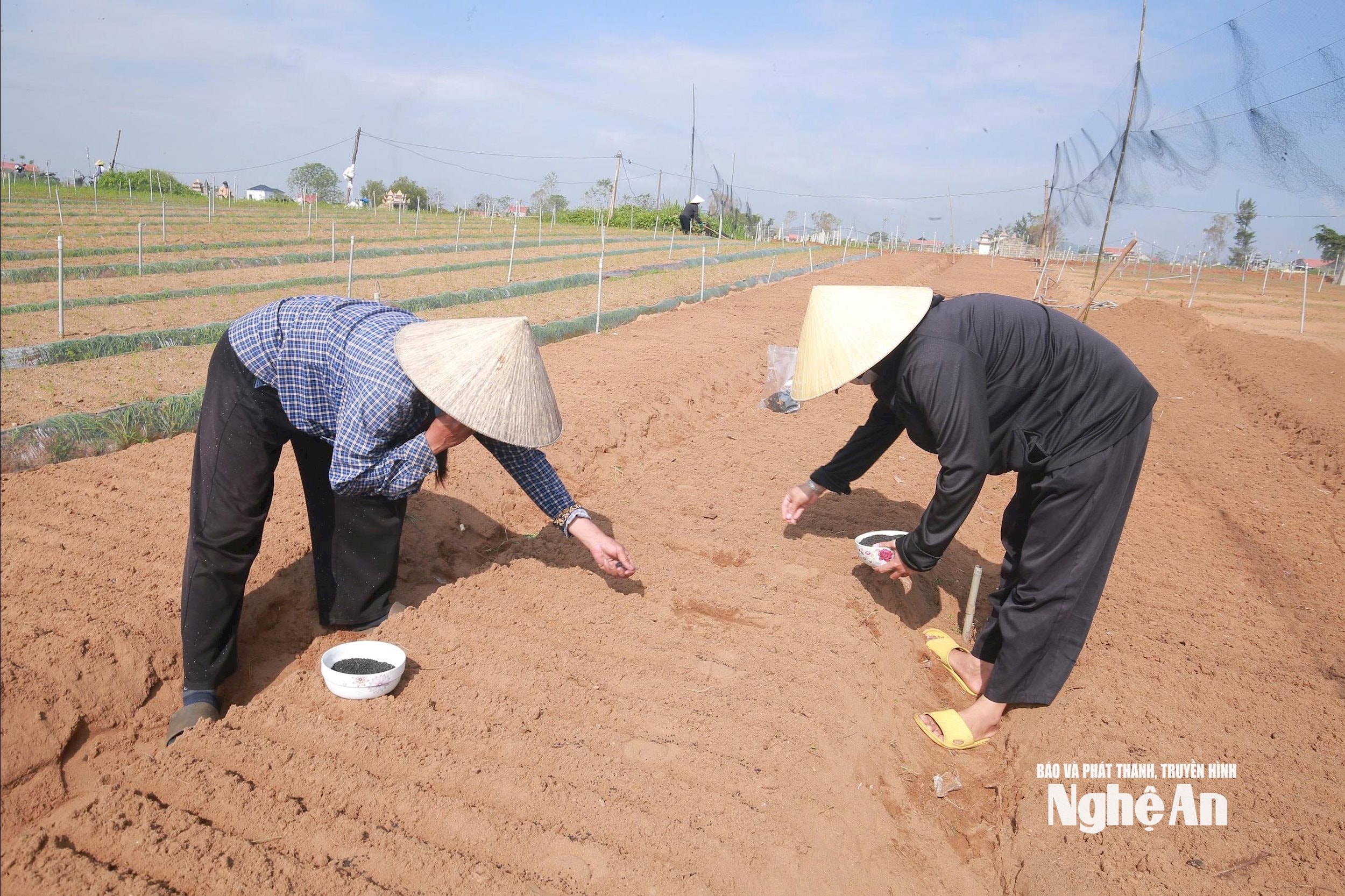
In the flooded field, Mrs. Nguyen Thi Thom in Binh Minh village was busy weeding and fertilizing her 3 sao onion field that had just recovered. “During the storm, the onions were crushed, but now that it is dry, I am taking advantage of the time to take care of them. If the weather is favorable, we can harvest in about a month, in time to supply the market when there is a shortage of goods and prices are increasing,” she said happily.
Not far away, Mr. Truong Dau was plowing the land, making ridges to sow cabbage and carrots. He said that after the storm, green vegetables were scarce so prices increased, giving farmers an opportunity to recover some of their losses. “We try to stick to the fields, work and learn from experience, choosing short-term varieties to sell at the end of the year,” Mr. Dau shared.
In the vegetable area of Quynh Anh commune, the dry areas were quickly taken care of by farmers, fertilized vegetables, onions and planted more winter vegetables. Currently, many carrot areas have been planted for nearly a month but have been affected by heavy rain. Farmers are focusing on plowing, weeding, and increasing watering so that the plants can grow well and be harvested in time when vegetable prices are high.
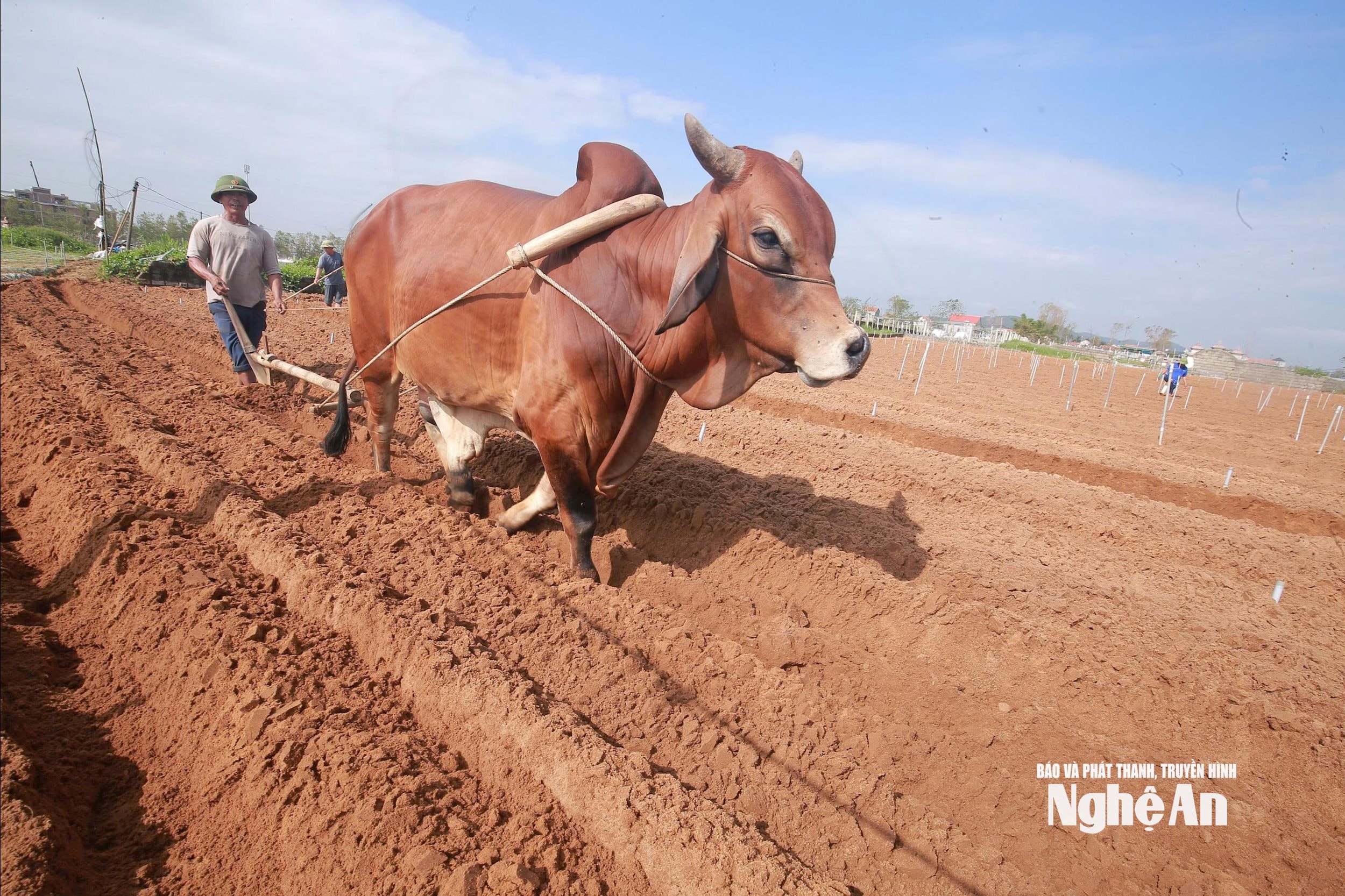
According to Mr. Ho Dang Tam - Director of Quynh Bang Agricultural Cooperative, the Cooperative has mobilized technical staff to stay in the fields, instructing people to take care of the damaged vegetable area, and at the same time organizing the provision of additional fertilizers and seeds in the form of deferred payment. "The season is late, so we encourage people to choose short-term vegetable varieties to supply the market after the storm. At the same time, proactively cover with plastic to keep moisture, keep heat, limit cold rain, ensure high-quality, long-term vegetables such as carrots, cauliflower, cabbage... to supply the Tet market", Mr. Tam said.
In the vegetable fields of Vinh Hung ward, the production atmosphere is also bustling. Ms. Nguyen Thi Lan, Vinh Xuan block, excitedly said: "Vegetable prices have nearly doubled compared to before the storm. Everyone is trying to plant and take care of short-term vegetables such as mustard greens, water spinach, lettuce to harvest early, both to meet market demand and to compensate for losses."
Not only with vegetables, the provincial agricultural sector also directed localities to focus on restoring fruit trees, especially oranges in mountainous communes such as Nhan Hoa, Hanh Lam, Con Cuong... After the storm, many orange gardens were broken and fruit fell. In Nhan Hoa commune, Ms. Nguyen Thi Nga sadly looked at the orange garden being whipped by the wind, with fruit falling all over the ground: "Oranges are the main source of income for the family. Although there is a lot of damage, we are pruning, fertilizing, and taking care of the garden, hoping to keep the remaining fruit to have a little income at the end of the year."
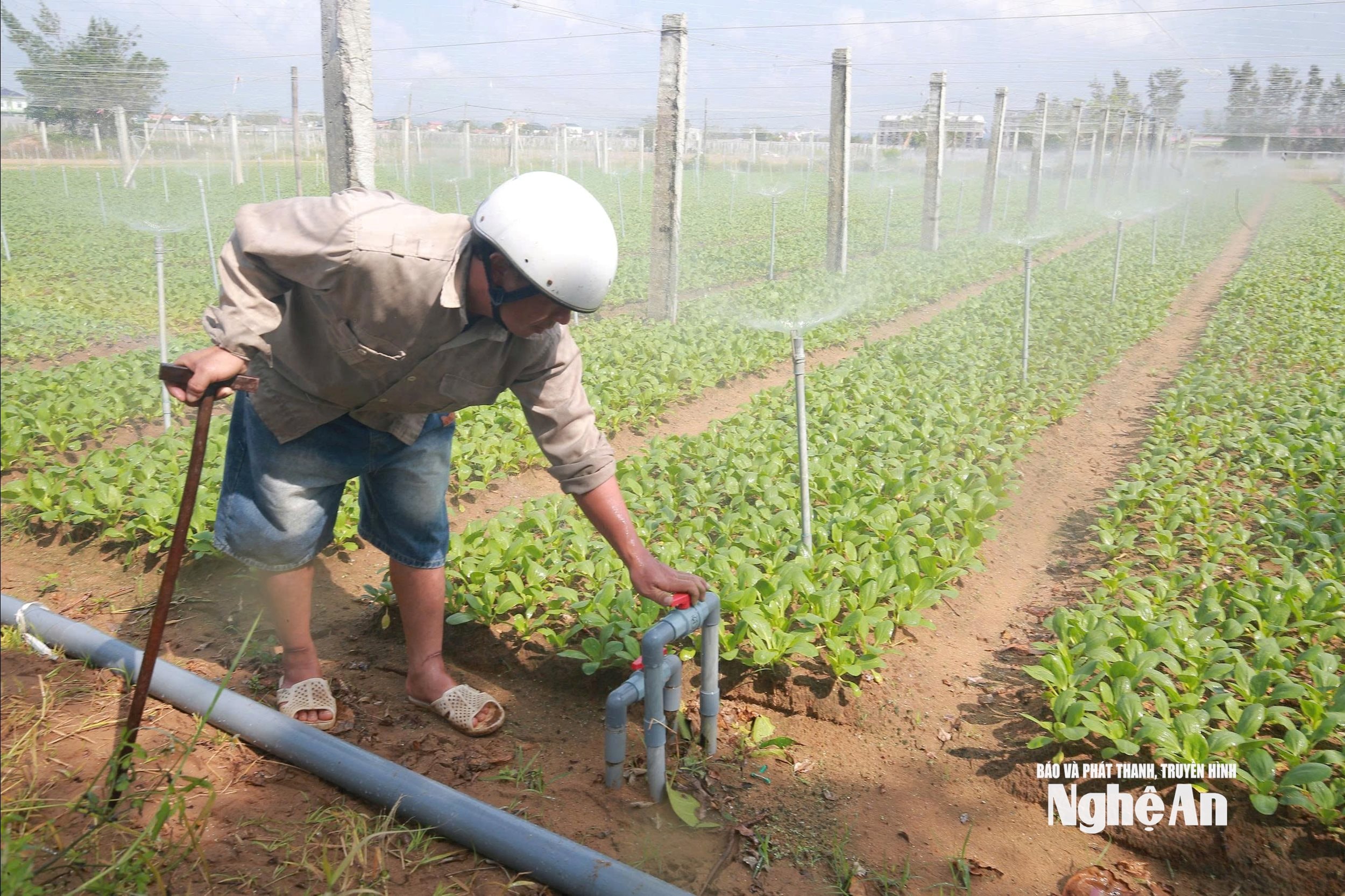
According to information from the Nghe An Department of Crop Production and Plant Protection, due to the impact of storms and floods, many localities have not been able to produce simultaneously. Currently, the industry is guiding farmers based on the time frame, variety characteristics and weather developments to arrange flexible planting schedules, both ensuring output and avoiding risks. The end of the year is the major production season for farmers, when market demand increases sharply, prices are stable and easy to consume. Therefore, a quick but safe and sustainable recovery is the key for Nghe An agriculture to not only overcome storms and floods but also accelerate recovery, creating a foundation for a successful winter crop and a full Tet.
